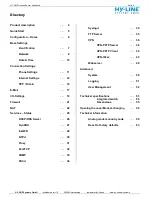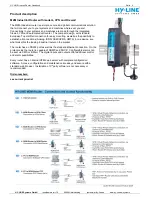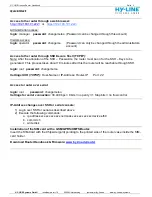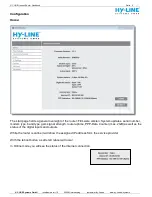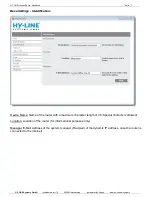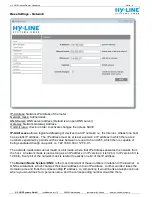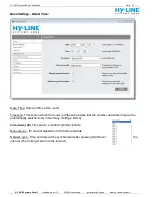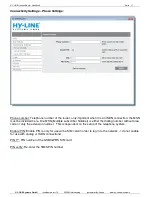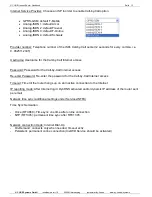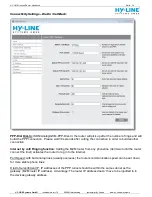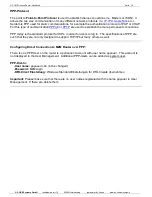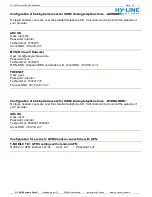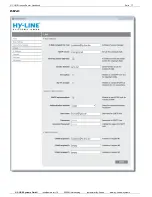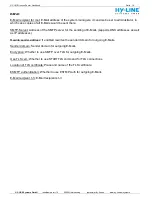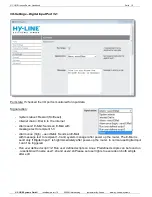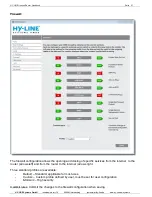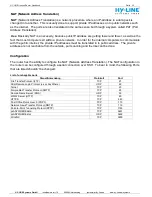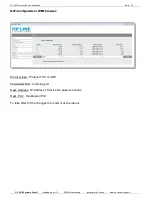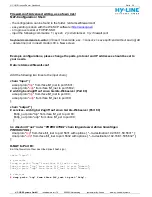
HY-LINE truecon Router Handbuch Seite 9
HY-LINE Systems GmbH
Inselkammerstr. 10 82008 Unterhaching systems(at)hy-line.de www.hy-line.de/systems
The DNS system exists for simplicities sake, such that people are able to remember words better than a
bunch of numbers. For example it would be much easier to remember the domain name
www.wikimedia.org
in comparison to the
IP-Address
207.142.131.236
. It is also able to work the
opposite way, i.e. get a domain name form an IP address (aka
reverse lookup
). In comparison to the
telephone system, one would have a phone number and then find the adjoining name to that number.
Through this DNS system, the domain name level of addresses can stay fixed while the IP addresses can
be flexible, changing when needed without interrupting service to the original domain address, as well as
being capable of load balancing.
A
Gateway
is the basis that allows networking to occur, this networking is based on a different set of
protocols, in order to connect others. In addition to this, a gateway uses a protocol translator so that
different computers can talk to each other, i.e. Linux to Windows. Within the gateway is everything
allowed, in relation to the conversion of protocol, as well as the loss of data of that which is not absorbed
by the addressee. In comparison, data packs that are with IPX/SPX, but destined for the internet are
changed in to TCP/IP by the gateway.
In many operating systems, the IP address of the router, for example those in routing tables, will be used
as the gateway.
Gateways also don’t work with tunnel protocol, such as a protocol wrapped inside
another protocol, sent to a specific address then unpacked and sent through its normal protocol (NetBIOS
over TCP/IP is such an example).
One takes a protocol and changes in to another, there is no need, such that the output protocol is not
used like in Tunneling.



